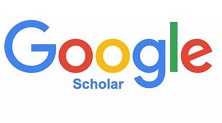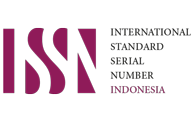Analysis of Ambient Air Quality of Carbon Monoxide in Parking Areas (Case Study of Type B and Type C Hospitals in Surabaya City)
Abstract
The human respiratory system is vulnerable to the impacts of carbon monoxide (CO) emissions, a colorless and odorless gas. The aim of this research is to analyze the CO levels in the air and its relation to regulations governing air quality, specifically referring to Government Regulation Number 22 of 2021. This study also discusses the correlation between CO levels with air temperature and the number of motor vehicles. Measurements were conducted using a CO meter, and manual counting of motor vehicles was included as part of the purposive sampling procedure over a period of 3 days. On Saturdays, the average CO concentration was at its highest point, ranging from 64.131 μg/m3 in the morning to 52.106 μg/m3 in the afternoon and 37.791 μg/m3 in the evening. The average temperatures recorded were 31°C in the morning, 32°C in the afternoon, and 30°C in the evening. There was an increase in CO levels at Hospital X exceeding the permissible limit stated in Government Regulation Number 22 of 2021. Regarding air quality at Hospital Y, CO concentrations were 33.210 μg/m3 in the morning, 11.451 μg/m3 in the afternoon, and 29.775 μg/m3 on Monday afternoon, all of which were above normal levels. With a value of α of 0.000, which is less than 0.01 according to Pearson correlation test, a significant relationship between temperature and CO levels was revealed, with a Pearson correlation coefficient (r) of -0.917. There is a perfect negative correlation between these two variables. To determine the presence of a relationship between the number of motor vehicles and CO concentration, the Pearson correlation test yielded a significant result with a value of α of 0.048 and an r value of 0.670. The correlation between the two variables is evident.
Keywords
Full Text:
PDFReferences
Heridiansyah. (2012). Pengaruh Advertising Terhadap Pembentukan Brand Awareness Serta Dampaknya Pada Keputusan Pembelian Produk Kecap Pedas Abc (Studi Kasus Pada Konsumen Pengguna Kecap Pedas Abc Di Kota Semarang). Jurnal Stie Semarang, 4.
Ivanastuti, D., Widiatmono, B. R., & Susanawati, L. D. (2015). Tingkat Penurunan Konsentrasi Karbon Monoksida (Co) Udara Ambien Menggunakan Taman Vertikal (Studi Kasus Di Esa Sampoerna Center Surabaya). 2.
Kristi, Y. W., & Boedisantoso, R. (2015). Analisis Beban Emisi Udara Co Dan No2 Akibat Sektor Transportasi Darat Di Kota Probolinggo. Jurnal Purifikasi, 15(2), 88–107. Https://Doi.Org/10.12962/J25983806.V15.I2.29
Mabahwi, N.A., Leh, O.L.H., Omar, D. 2015. Urban Air Quality And Human Health Effects In Selangor, Malaysia. Procedia-Social And Behavioral Sciences, Vol. 170, Hal. 282-291.
Pangerapan, S. B., Sumampouw, O. J., & Soleiman, W. B. (2018). Analisis Kadar Karbon Monoksida (Co) Udara Di Terminal Beriman Kota Tomohon Tahun 2018.
Peraturan Pemerintah Republik Indonesia Nomor 22 Tahun 2021 Tentang Penyelenggaraan Perlindungan Dan Pengelolaan Lingkungan Hidup.
Priyambodo, P. (2018). Analisis Korelasi Jumlah Kendaraan Dan Pengaruhnya Terhadap Pdrb di Provinsi Jawa Timur. Warta Penelitian Perhubungan, 30(1), 59. Https://Doi.Org/10.25104/Warlit.V30i1.634
Refbacks
- There are currently no refbacks.







